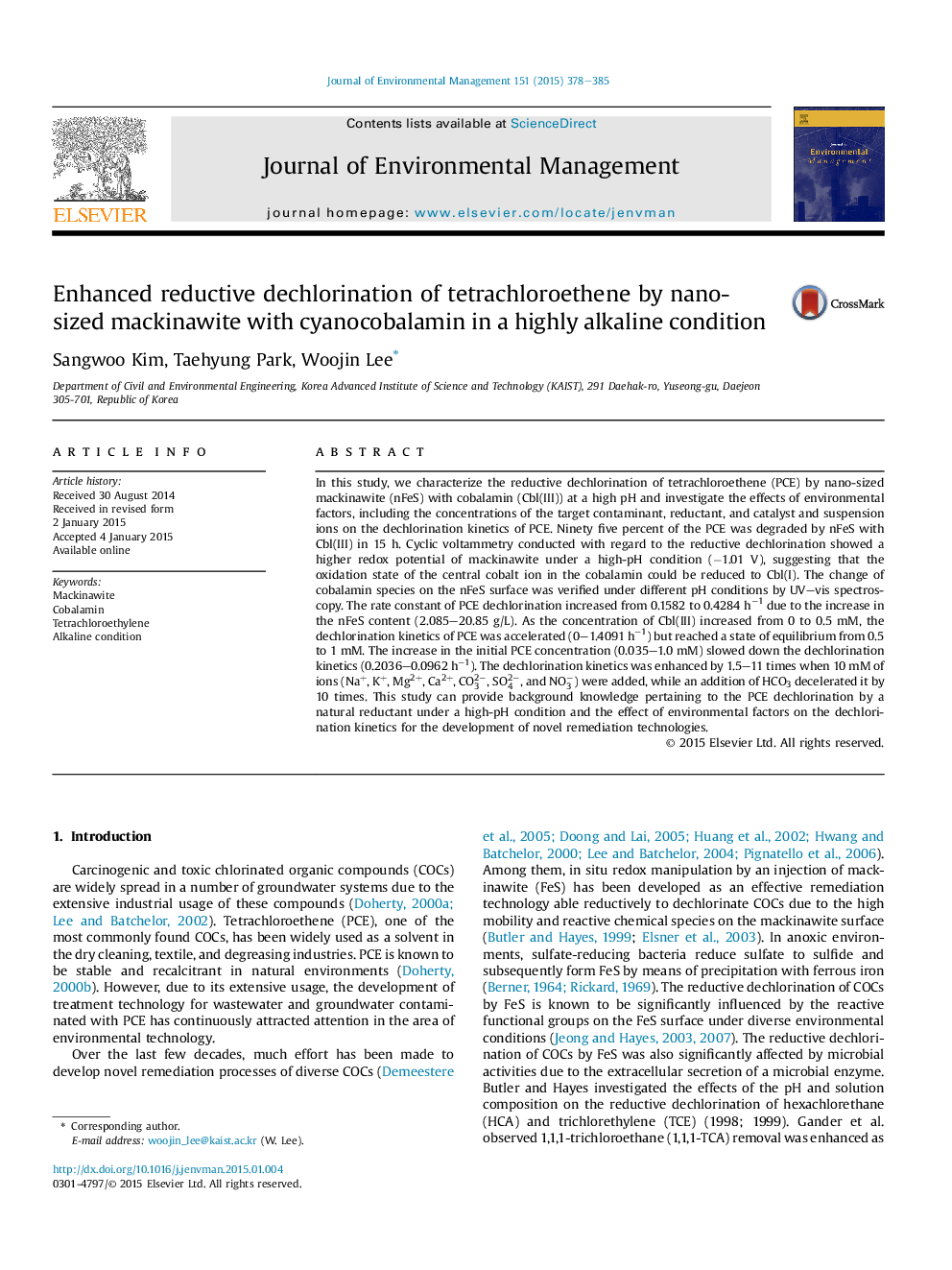| Article ID | Journal | Published Year | Pages | File Type |
|---|---|---|---|---|
| 7483035 | Journal of Environmental Management | 2015 | 8 Pages |
Abstract
In this study, we characterize the reductive dechlorination of tetrachloroethene (PCE) by nano-sized mackinawite (nFeS) with cobalamin (Cbl(III)) at a high pH and investigate the effects of environmental factors, including the concentrations of the target contaminant, reductant, and catalyst and suspension ions on the dechlorination kinetics of PCE. Ninety five percent of the PCE was degraded by nFeS with Cbl(III) in 15Â h. Cyclic voltammetry conducted with regard to the reductive dechlorination showed a higher redox potential of mackinawite under a high-pH condition (â1.01Â V), suggesting that the oxidation state of the central cobalt ion in the cobalamin could be reduced to Cbl(I). The change of cobalamin species on the nFeS surface was verified under different pH conditions by UV-vis spectroscopy. The rate constant of PCE dechlorination increased from 0.1582 to 0.4284Â hâ1 due to the increase in the nFeS content (2.085-20.85Â g/L). As the concentration of Cbl(III) increased from 0 to 0.5Â mM, the dechlorination kinetics of PCE was accelerated (0-1.4091Â hâ1) but reached a state of equilibrium from 0.5 to 1Â mM. The increase in the initial PCE concentration (0.035-1.0Â mM) slowed down the dechlorination kinetics (0.2036-0.0962Â hâ1). The dechlorination kinetics was enhanced by 1.5-11 times when 10Â mM of ions (Na+, K+, Mg2+, Ca2+, CO32â, SO42â, and NO3â) were added, while an addition of HCO3 decelerated it by 10 times. This study can provide background knowledge pertaining to the PCE dechlorination by a natural reductant under a high-pH condition and the effect of environmental factors on the dechlorination kinetics for the development of novel remediation technologies.
Related Topics
Physical Sciences and Engineering
Energy
Renewable Energy, Sustainability and the Environment
Authors
Sangwoo Kim, Taehyung Park, Woojin Lee,
